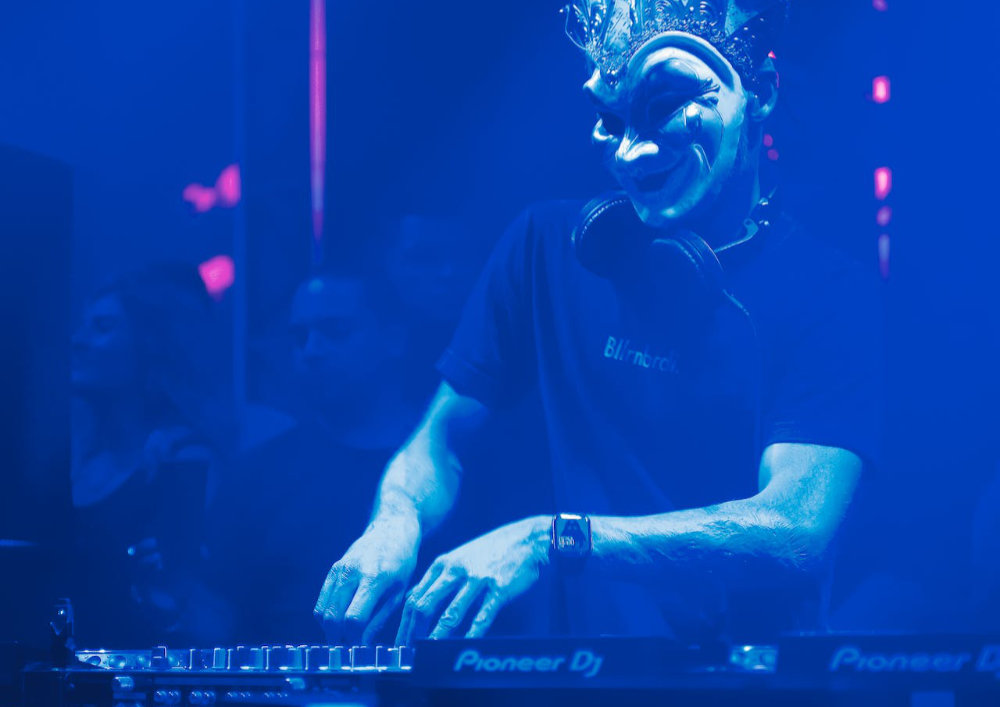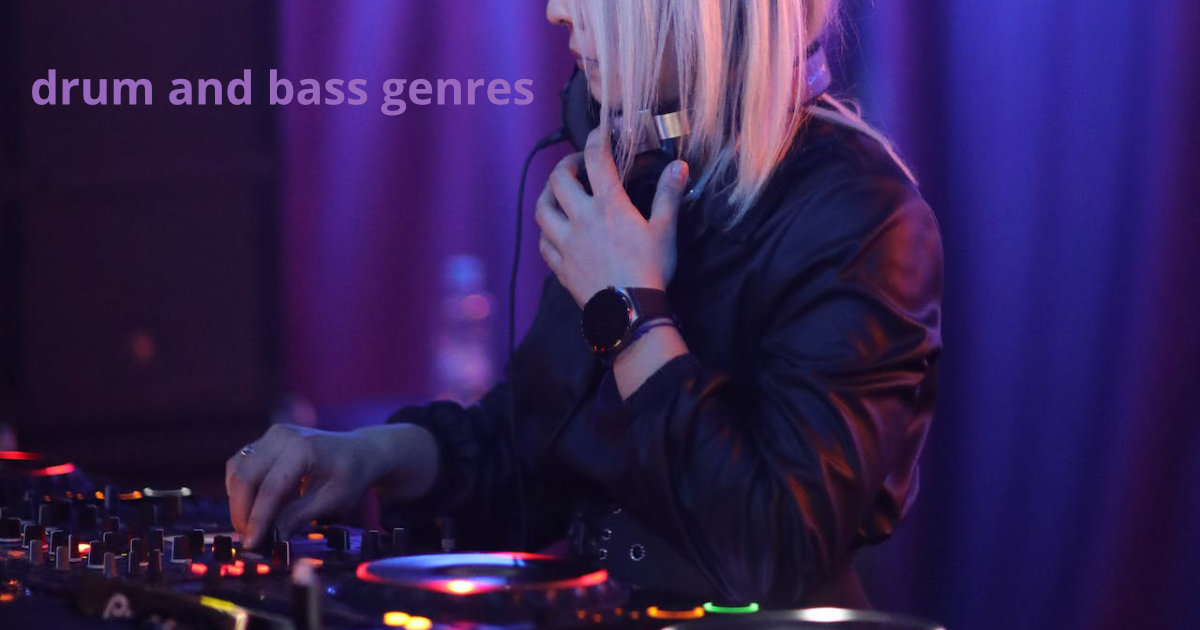Estimated reading time: 6 minutes
Drum and Bass is a genre that has captivated music lovers and electronic dance music (EDM) enthusiasts for decades. With its infectious beats, energetic rhythms, and heavy basslines, it has become a staple in the EDM scene. But what exactly is Drum and Bass? How has it evolved over time? In this article, we will delve into the definition and evolution of Drum and Bass genres, shedding light on its history, subgenres, notable artists, and more.
Table of contents
- The Definition and Evolution of Drum and Bass
- Popularity of Drum and Bass in the EDM Scene
- History of Drum and Bass: Origins and Influences
- Emergence of Drum and Bass in the Late 1980s and Early 1990s
- Influences from Breakbeat Hardcore Rave Culture and Jamaican Sound
- Characteristics of Drum and Bass: BPM Range and Rhythmic Foundation
- Subgenres and Styles within Drum and Bass
- Notable Artists and Labels in the Drum and Bass Scene
- Producing Drum and Bass with the help of Music Production Courses
- Conclusion: The Continuing Evolution of Drum and Bass Genres
- FAQ
The Definition and Evolution of Drum and Bass
Drum and Bass, also known as D&B or DnB, is a genre of electronic music that emerged in the late 1980s and early 1990s in the United Kingdom. It is characterized by its fast tempo, typically ranging from 160 to 180 beats per minute (BPM), and its use of chopped up breakbeats as a rhythmic foundation. Heavy basslines are another signature element of Drum and Bass, providing a powerful and driving energy to the music.
Popularity of Drum and Bass in the EDM Scene
Drum and Bass has gained significant popularity in the EDM scene over the years. Its infectious beats and energetic rhythms make it a favorite among music festival-goers and clubbers alike. DJs and producers have embraced Drum and Bass for its versatility and ability to create high-energy dancefloor experiences. Its fast-paced nature and intricate drum patterns appeal to those seeking an adrenaline-pumping, immersive musical experience.
History of Drum and Bass: Origins and Influences
The history of Drum and Bass can be traced back to the early influences of reggae, dub, and hip-hop. In the late 1980s and early 1990s, a new wave of electronic music emerged in the UK, combining elements of these genres with breakbeat hardcore rave culture and Jamaican sound system culture. This fusion gave birth to the precursor of Drum and Bass known as Jungle music.

Emergence of Drum and Bass in the Late 1980s and Early 1990s
The late 1980s and early 1990s marked a pivotal moment in the evolution of Drum and Bass. DJs and producers began experimenting with faster tempos and more complex rhythms, incorporating breakbeats and samples from various sources. This experimentation led to the creation of a new sound that would eventually become known as Drum and Bass.
The Jungle Music Era: Development of Jungle as a Precursor to Drum and Bass
Jungle music played a crucial role in the development of Drum and Bass. It was characterized by its heavy use of breakbeats, reggae and dub samples, and fast-paced rhythms. Jungle music became a cultural movement, with its own distinct fashion, artwork, and dance styles. The energy and excitement surrounding Jungle music laid the foundation for the future evolution of Drum and Bass.
Influences from Breakbeat Hardcore Rave Culture and Jamaican Sound
Drum and Bass drew influences from the breakbeat hardcore rave culture of the late 1980s and early 1990s. This culture was characterized by its high-energy, fast-paced music, which often featured breakbeats and samples from various genres. Additionally, Jamaican sound system culture played a significant role in shaping the sound of Drum and Bass. The use of heavy basslines and dub effects can be traced back to the Jamaican sound system tradition.
Characteristics of Drum and Bass: BPM Range and Rhythmic Foundation
Drum and Bass is known for its fast tempo, typically ranging from 160 to 180 beats per minute. This high BPM range contributes to the intense and energetic nature of the genre. The rhythmic foundation of Drum and Bass is built upon chopped up breakbeats, which are manipulated and rearranged to create intricate and dynamic drum patterns. This rhythmic complexity sets Drum and Bass apart from other electronic music genres.
Heavy Basslines: A Signature Element of Drum and Bass
One of the defining characteristics of Drum and Bass is its heavy basslines. These basslines provide a powerful and driving force to the music, creating a sense of energy and intensity. The use of bass in Drum and Bass is not just limited to low frequencies; it often incorporates intricate melodic elements and modulations. The combination of heavy basslines and fast-paced rhythms creates a unique and captivating sonic experience.
Subgenres and Styles within Drum and Bass
Drum and Bass has spawned numerous subgenres and styles over the years, each with its own distinct characteristics and influences. Some of the notable subgenres include Liquid Drum and Bass, Neurofunk, Jump-Up, and Techstep. These subgenres showcase the diversity and versatility of Drum and Bass, catering to different moods and preferences within the genre.
| Subgenre | Description |
|---|---|
| Liquid Drum and Bass | Characterized by smooth and melodic elements, often featuring soulful vocals and atmospheric textures. |
| Neurofunk | Known for its dark and futuristic sound, characterized by complex basslines, intricate drum patterns, and sci-fi-inspired atmospheres. |
| Jump-Up | Energetic and upbeat style, characterized by catchy hooks, heavy basslines, and infectious rhythms. |
| Techstep | Dark and aggressive subgenre, characterized by its heavy use of distorted basslines, hard-hitting drums, and industrial soundscapes. |
Notable Artists and Labels in the Drum and Bass Scene
The Drum and Bass scene is home to many talented artists and influential labels. Some of the notable artists include Andy C, Goldie, LTJ Bukem, Joe Ford, and Noisia. These artists have made significant contributions to the genre and have helped shape its evolution over the years. In terms of labels, Hospital Records, Metalheadz, and Ram Records are among the most respected and influential in the Drum and Bass community.
Producing Drum and Bass with the help of Music Production Courses
If you are interested in producing your own Drum and Bass music, there are various music production courses available that can help you get started. These courses cover topics such as sound design, mixing and mastering, arrangement techniques, and more. Whether you are a beginner or an experienced producer looking to refine your skills, these courses can provide valuable insights and guidance to help you create your own unique Drum and Bass sound.
Conclusion: The Continuing Evolution of Drum and Bass Genres
Drum and Bass genres have come a long way since their early beginnings. From the emergence of Jungle as a precursor to Drum and Bass to the diverse range of subgenres and styles that exist today, the genre continues to evolve and push boundaries. With its infectious beats, energetic rhythms, and heavy basslines, Drum and Bass has secured its place in the EDM scene and continues to captivate audiences worldwide.
Related Posts
- What is Bass Music? A Deep Dive into the World of Low-End Frequencies
FAQ
The typical BPM range for Drum and Bass is between 160 and 180 beats per minute.
Drum and Bass is built upon chopped up breakbeats, which are manipulated and rearranged to create intricate and dynamic drum patterns.
Some notable subgenres within Drum and Bass include Liquid Drum and Bass, Neurofunk, Jump-Up, and Techstep.
Andy C, Goldie, LTJ Bukem, and Noisia are some notable artists in the Drum and Bass scene.
Yes, there are various music production courses available that can help you produce your own Drum and Bass music. These courses cover topics such as sound design, mixing and mastering, and arrangement techniques.
